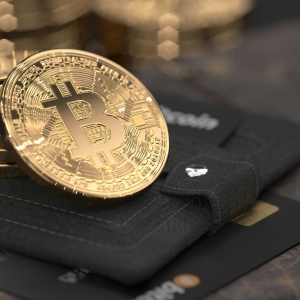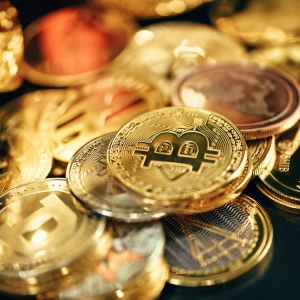The digital revolution is moving fast, and Web3 is at the heart of this transformation. Unlike Web2, which is dominated by centralized platforms and intermediaries, Web3 is built on decentralized networks, giving users direct control over their data and digital assets. Accessing this new decentralized world requires a secure, reliable, and intuitive tool — this is where decentralized wallets come into play. These wallets are no longer just storage for cryptocurrencies; they are becoming the primary gateway for millions of users to engage with blockchain technology, DeFi platforms, NFTs, and other decentralized applications (dApps). The emergence of Cryptocurrency Wallet Development has been crucial in making this possible, offering solutions that combine ease of use with advanced security features.
Decentralized wallets, also known as non-custodial wallets, differ significantly from traditional wallets. In a centralized wallet or exchange, the platform manages your private keys, which means your access to assets depends on their security and operational integrity. Decentralized wallets, however, put the control entirely in the hands of users. Each individual manages their private keys, ensuring that they have full ownership and responsibility for their digital assets. This model minimizes the risk of hacks targeting centralized servers and enhances user privacy, making these wallets an essential pillar of the Web3 ecosystem.
The Core Features of Decentralized Wallets
At the heart of decentralized wallets is security. Unlike conventional wallets, decentralized wallets do not store your private keys on a server. Instead, they rely on cryptographic principles, including seed phrases and multi-layered encryption, to secure user assets. This ensures that only the wallet owner can access and control their funds. Modern decentralized wallets also integrate advanced features such as biometric authentication, hardware wallet compatibility, and recovery protocols, which allow users to safely restore access in case of lost credentials.
Interoperability is another significant advantage of decentralized wallets. As Web3 grows, users often interact with multiple blockchain networks simultaneously. Decentralized wallets support various cryptocurrencies and tokens, enabling seamless management of assets across Ethereum, Binance Smart Chain, Solana, and more. By providing a single interface to handle multiple blockchains, these wallets reduce complexity and allow users to participate in diverse Web3 activities without switching platforms. This multi-chain support is vital as the blockchain ecosystem continues to expand and diversify.
Decentralized Wallets and Web3 Adoption
The adoption of Web3 relies heavily on user experience. Traditional blockchain interactions were often complex, requiring technical knowledge to manage wallets, private keys, and transactions. Decentralized wallets are changing this narrative. Modern wallet interfaces are designed to be intuitive, making it easier for even non-technical users to navigate the decentralized world. Integrated Web3 browsers, built-in NFT marketplaces, and direct dApp connections simplify user interaction, breaking barriers to entry and accelerating mass adoption.
Moreover, decentralized wallets empower users to participate in decentralized finance (DeFi) and other blockchain-based ecosystems without intermediaries. Users can lend, borrow, stake, or trade assets directly from their wallets, maintaining control of their funds at every step. This level of autonomy not only enhances financial freedom but also cultivates a more transparent, inclusive economy. By enabling peer-to-peer transactions without reliance on banks or brokers, decentralized wallets are redefining the financial landscape in the Web3 era.
Privacy and Data Ownership
One of the most significant benefits of decentralized wallets is their focus on privacy and data ownership. Unlike traditional financial systems, which collect, store, and sometimes monetize user data, decentralized wallets ensure that personal information remains under the user’s control. Private keys and transaction data are stored locally on the user’s device rather than on central servers, reducing the risk of identity theft and unauthorized surveillance. As regulatory scrutiny increases globally, this emphasis on privacy makes decentralized wallets particularly attractive to users who value control over their digital footprint.
Additionally, some decentralized wallets integrate features like zero-knowledge proofs and anonymous transaction protocols to further enhance privacy. By combining these technologies, users can engage in financial activities without exposing sensitive information, fostering a safer and more secure digital environment. This approach aligns with the broader ethos of Web3, which emphasizes individual empowerment, transparency, and trustless interactions.
The Future of Decentralized Wallets
The trajectory of decentralized wallets suggests that they will play a central role in the future of Web3. As blockchain technology evolves, wallets are likely to integrate AI-driven features, personalized financial insights, and enhanced security protocols. Innovations such as social recovery mechanisms, cross-chain asset swaps, and on-chain identity verification are already shaping the next generation of wallets. These developments aim to improve usability while maintaining the fundamental principles of decentralization and self-sovereignty.
Furthermore, decentralized wallets are expected to become a hub for digital identity management in Web3. Beyond holding cryptocurrencies, they may store credentials, certifications, and reputational scores, allowing users to interact with online services securely and seamlessly. This integration of financial and identity functions positions decentralized wallets as a cornerstone of the decentralized internet, making them essential tools for the broader adoption of Web3 technologies.
Conclusion
Decentralized wallets are more than just tools for storing digital assets; they are the gateway to the future of Web3. By combining security, privacy, interoperability, and user-centric design, these wallets empower individuals to fully participate in the decentralized economy. They simplify access to blockchain networks, dApps, and DeFi services while ensuring users maintain control over their digital identity and assets. For businesses and developers aiming to create cutting-edge solutions in this space, partnering with a reliable Top Cryptocurrency Wallet Development Company is key. WisewayTec, with its expertise in Cryptocurrency Wallet Development, stands at the forefront of enabling secure, user-friendly, and innovative wallet solutions, shaping the next generation of Web3 experiences.
Frequently Asked Questions (FAQs)
1. What is a decentralized wallet?
A decentralized wallet is a non-custodial wallet where users control their private keys and assets, rather than relying on a centralized platform.
2. How do decentralized wallets differ from centralized wallets?
Centralized wallets store private keys on servers managed by a company, while decentralized wallets give users full control of their keys and funds, enhancing security and privacy.
3. Can I use one decentralized wallet for multiple blockchains?
Yes, most modern decentralized wallets are multi-chain compatible, allowing users to manage assets across various blockchain networks seamlessly.
4. Are decentralized wallets safe to use?
Decentralized wallets are highly secure due to cryptographic encryption, seed phrases, and local storage of private keys. However, users must safeguard their private keys to prevent loss of access.
5. How do decentralized wallets support Web3 adoption?
By providing easy access to dApps, DeFi platforms, NFTs, and blockchain services, decentralized wallets simplify user interaction with Web3, promoting wider adoption of decentralized technologies.









